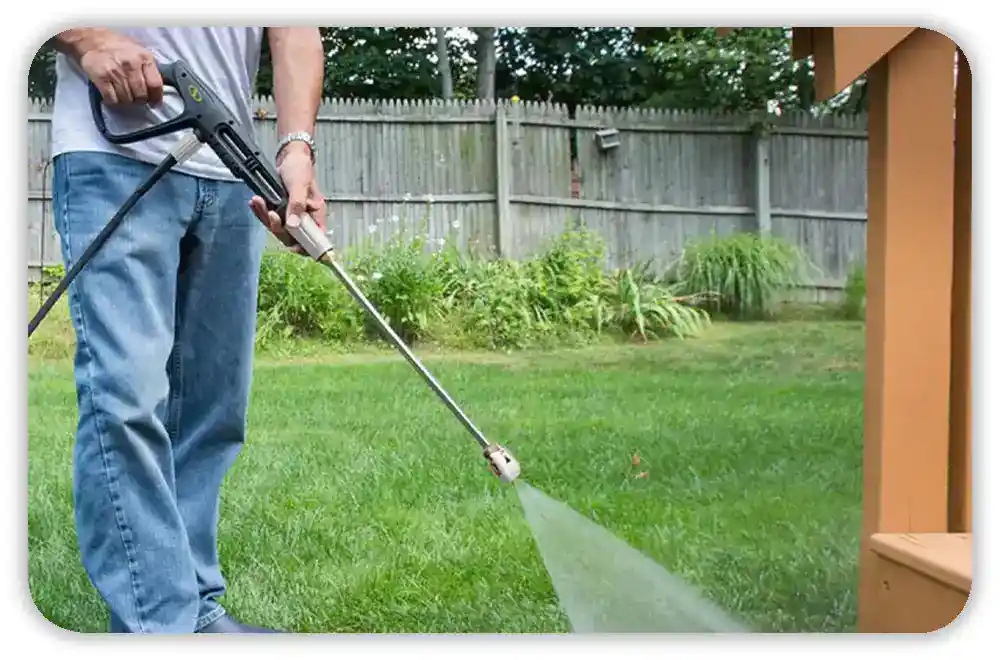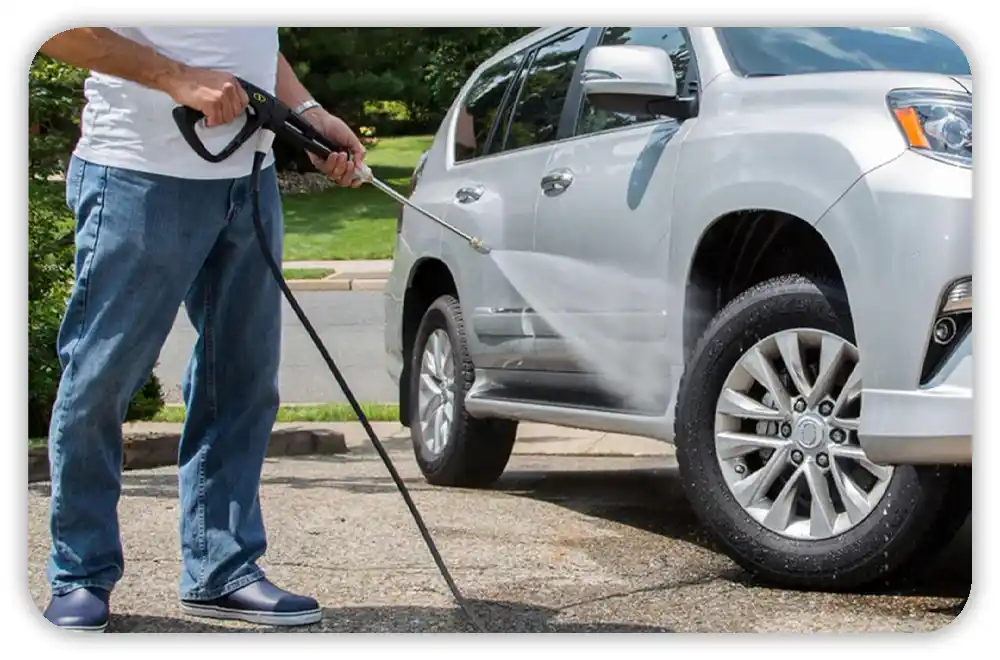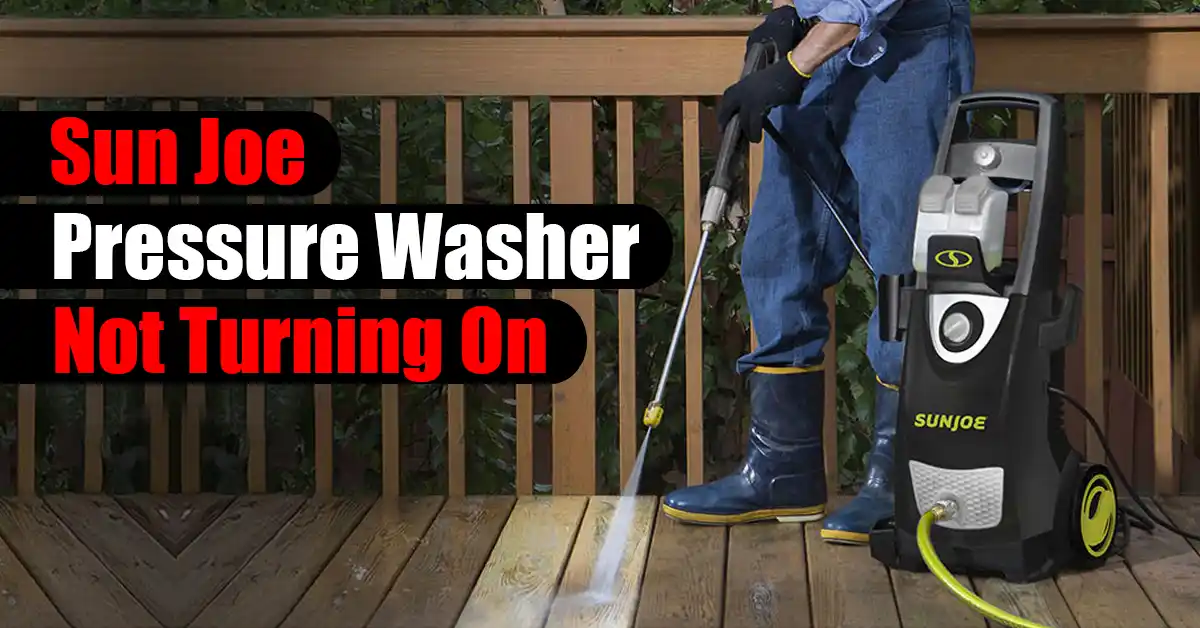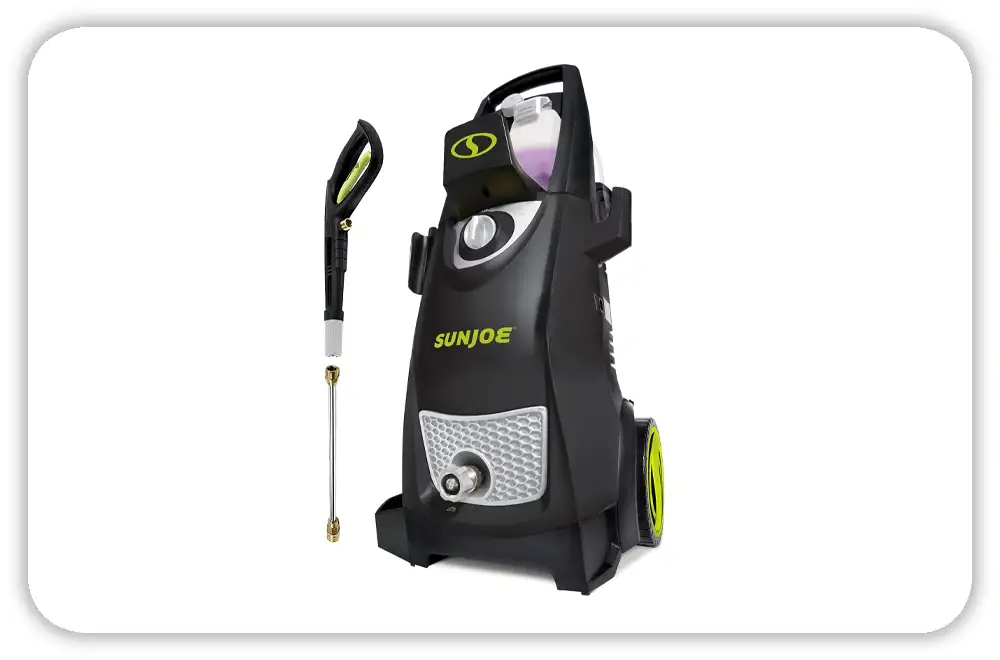If your Sun Joe pressure washer won’t turn on, don’t worry. I know how annoying that can be—especially when you’re ready to clean. The good news? The fix is often easier than you’d think. Mine once stopped working after winter.
The problem? A tripped GFCI plug from cold, damp air. After fixing many of these machines, I’ve learned a few quick tricks. These tips can save you time, stress, and money. Let’s go over them so you can get back to spraying fast.
Table of Contents
Understand the Problem: What Does “Not Turning On” Really Mean?
When someone says their Sun Joe pressure washer won’t start, it could mean a few things. Maybe there’s no sound or light at all. Maybe the GFCI plug keeps tripping. Or the motor hums but doesn’t spin. Each of these signs points to a different kind of problem—some electrical, some mechanical.
From what I’ve seen, most people assume the worst. But many times, the cause is small and easy to fix. It could be a bad outlet or a stuck pressure buildup in the pump. One time, my washer wouldn’t turn on just because the hose had a kink in it.
The key is to break things down into simple steps. That’s what we’ll do next. We’ll check for power issues, safety shutoffs, or parts that are stuck. A few quick checks can show what’s wrong—and whether it’s an easy fix or time to call support.
Quick Checks First (Start Here)
Before messing with wires or opening your washer, always start with the basics. You’d be surprised how often a Sun Joe won’t turn on because of something small—like a loose plug or a tripped outlet. These simple checks can save you time and stress.

Is It Plugged In and Getting Power?
This may sound too simple, but I’ve skipped this step before—especially when rushing.
- Test the outlet: Plug in a phone charger or lamp. If that doesn’t work, check your home’s circuit breaker.
- Avoid extension cords: Long or thin cords can lower voltage. My washer once hummed but didn’t run because of this. Plug it straight into a wall outlet.
- Check the power switch: Make sure the washer’s switch is in the “ON” position. It’s easy to forget—especially if you expect it to start when you pull the trigger.
Check the GFCI Plug
Most Sun Joe pressure washers in the U.S. use a plug with a built-in GFCI (Ground Fault Circuit Interrupter). This safety device cuts power if it senses a fault.
- Reset the GFCI: Press the red “RESET” button. You should hear a click and maybe see a small light turn on.
- If it trips again: This might mean there’s a short or fault—either in your washer or the outlet. Try a different outlet on another circuit.
- If it won’t reset at all: The GFCI plug might be broken. I had to replace mine after a rainy spring fried the old one.
These two steps fix most “won’t turn on” issues I’ve come across. Still not working? No worries—we’ll go deeper into the real causes next.
Common Reasons Your Sun Joe Pressure Washer Isn’t Turning On
If your Sun Joe pressure washer still won’t start after the basic checks, don’t stress. There are a few common reasons why this happens. From safety systems to wear and tear, I’ve seen it all—usually after a long weekend of trial and error! Let’s break it down, one issue at a time.
Tripped GFCI or Bad Outlet
- Test the outlet: Plug in something simple, like a phone charger or lamp. If that doesn’t work, the outlet or breaker could be the problem. This happens a lot in garages or older outdoor plugs.
- Check the GFCI plug: If the GFCI trips or won’t reset, try another outlet—ideally one on a different circuit.
- Real example: After a rainy night, my GFCI kept tripping. Moisture had gotten into the plug. I dried it off, hit reset, and it worked fine.
Faulty On/Off Switch or Total Stop System (TSS)
- What is TSS? It’s a feature that shuts off the motor when you’re not squeezing the trigger. If it fails, it might stop your washer from starting at all.
- What to look for: If the GFCI has power but the washer is dead silent, the switch or TSS could be the issue. Wiggle the power switch—if it feels soft or loose, that’s a clue.
Airlock or No Water Flow
- Why it matters: If water isn’t flowing, your Sun Joe might not start. These units are built to avoid dry runs, which can hurt the pump.
- How to fix it: Remove the nozzle, turn on the water, and squeeze the trigger. Wait until you see a steady stream before powering up.
- What happened to me: One time I forgot to open the faucet all the way. I thought my washer was dead—but once I turned it fully on, it kicked right in.
Humming but Not Starting
- What it means: The motor gets power, but it won’t spin. This usually points to a bad capacitor.
- What you’ll hear: A low hum, maybe a click—then nothing. No movement, no pressure.
- Fix from experience: This happened to me during a hot Texas summer. I tested the capacitor with a meter, replaced it for under $20, and the washer worked again.
Thermal Overload Protection
- What it does: This built-in safety shuts off the washer if it gets too hot.
- What causes it: Long use, not enough airflow, or using thin cords (under 14-gauge). I’ve triggered this while cleaning the driveway on a 90°F day.
- The fix: Turn off the washer, unplug it, and let it cool for 10–15 minutes.
Seized Pump After Storage
- What happens: If water freezes inside the pump, it can crack seals or jam parts. Come spring, it may not start—or it might just hum.
- How to prevent it: I run pump saver through my unit before winter. It protects the seals and keeps things smooth.
- Warning sign: If it hums and you can’t turn the pump shaft by hand, it might be seized. This is more common in cold states like Michigan or Pennsylvania.
Advanced Troubleshooting (For the Hands-On Users)
If you’ve tried all the basic steps and your Sun Joe still won’t turn on, it may be time to dig deeper. These tips are for anyone comfortable with a multimeter or a screwdriver. I’ve done these tests many times—and they’ve saved me from tossing a washer that only needed a cheap part.

Use a Multimeter to Test Parts
A multimeter is your best tool here. It helps you check what’s working and what’s not. You don’t have to be an expert—just go slow and follow the steps.
Test the capacitor: If your washer hums but won’t spin, the capacitor could be bad. Set your multimeter to test capacitance. Unplug and disconnect the capacitor, then test it. If the screen says “OL” or shows zero, it’s likely dead. I’ve fixed mine this way for less than $10.
Check the switch and wires: With the unit unplugged, press the power switch and test it with the multimeter. If you don’t get continuity, the switch may be broken. Also, inspect the wires for damage. I once found a small crack in the insulation—that tiny break stopped the whole washer.
Separate the Pump from the Motor
This takes a bit more effort, but it can help you find out if the motor is fine and the pump is jammed.
Step-by-step test:
- Unplug the washer and remove the housing.
- Detach the pump from the motor (just a few bolts).
- Try spinning the motor shaft by hand. If it turns easily, the motor is okay.
- Now turn the pump shaft. If it’s stiff or locked, the pump is likely the problem.
When to replace: If the pump is rusted, leaking oil, or won’t turn, it may be time for a new one. Pumps can be replaced, but if your washer is old, upgrading might make more sense—especially in the U.S., where parts can cost more than the unit is worth.
When to Call Customer Support or a Technician
Sometimes, even after trying everything, your Sun Joe pressure washer still won’t start. I’ve been there—and it’s totally fine to call in some help.
Signs It’s Time to Stop and Call Support
Here’s when I usually stop fixing it myself:
- You’ve tested the switch, wires, and capacitor—and everything seems fine.
- You smell burning or see smoke (stop right away if this happens).
- The pump or motor is leaking or clearly damaged.
- You’re not comfortable opening the unit or using a multimeter.
Trying to fix it past this point can do more harm than good—and might void your warranty.
Contacting Sun Joe Support
Sun Joe’s U.S. support is actually pretty helpful. I’ve called them a few times, and they walked me through simple fixes over the phone.
- Phone: 1-866-SNOW-JOE (1-866-766-9563)
- Hours: Monday to Friday, 9 AM–7 PM EST
- Website: snowjoe.com
Keep Your Warranty Info Handy
Most Sun Joe washers come with a 2-year warranty in the U.S. If yours is still under warranty, don’t take it apart too much. I made that mistake once—and it voided mine. Have your receipt ready when you call.
Preventative Maintenance Tips (From Experience)
Once your pressure washer is working again, keep it that way with a few simple habits I’ve picked up.
Before, During & After Each Use
- Before: Check the hose and nozzle for clogs. Turn on the water fully before powering up.
- During: Don’t run it dry. Let water flow before you pull the trigger.
- After: Squeeze the trigger to release leftover pressure and drain the water.
Protect It from Freezing
If you live where winters are cold, never leave water in the pump. I always run pump saver through the unit before storage. That one habit has saved me from cracked pumps more than once.
Be Smart with Extension Cords
Avoid using them if you can. If you must, use a heavy-duty 14-gauge or thicker cord. Thin cords lower voltage and can shut the unit down.
Check O-Rings and Nozzles Often
Once a month, check the O-rings and clean the spray tips. A clogged nozzle once made me think my washer was dead. A paperclip and 30 seconds fixed it.
Read More: Greenworks 2700 vs 3000
Conclusion
If your Sun Joe pressure washer won’t turn on, I hope this guide helped you fix it fast—without stress or an expensive repair. Most problems come from simple things, like a tripped plug or air in the system.
Got a question or your own fix-it story? Drop it in the comments. I’m always happy to help.
With a little patience (and maybe a multimeter), you’ll be back to cleaning your driveway in no time.
FAQs: Sun Joe Pressure Washer Not Turning On
Why is my Sun Joe pressure washer not turning on at all?
Check if it’s plugged in, the outlet works, and the GFCI plug is reset. Most issues come from simple power problems.
What should I do if the GFCI plug keeps tripping?
Dry it off and press the red reset button. If it trips again, try a different outlet. Moisture or wiring faults are common causes.
My pressure washer hums but won’t start—what’s wrong?
This often means a bad capacitor. The motor gets power but can’t spin. Replacing the capacitor is a common and low-cost fix.
Can low water flow stop the washer from turning on?
Yes. Sun Joe washers won’t run dry. Make sure water is on, no air is in the hose, and the trigger is held to purge airlocks.
When should I call Sun Joe customer support?
Call if there’s smoke, a burning smell, or no fix after checking power and parts. Support can help or arrange warranty repair.



